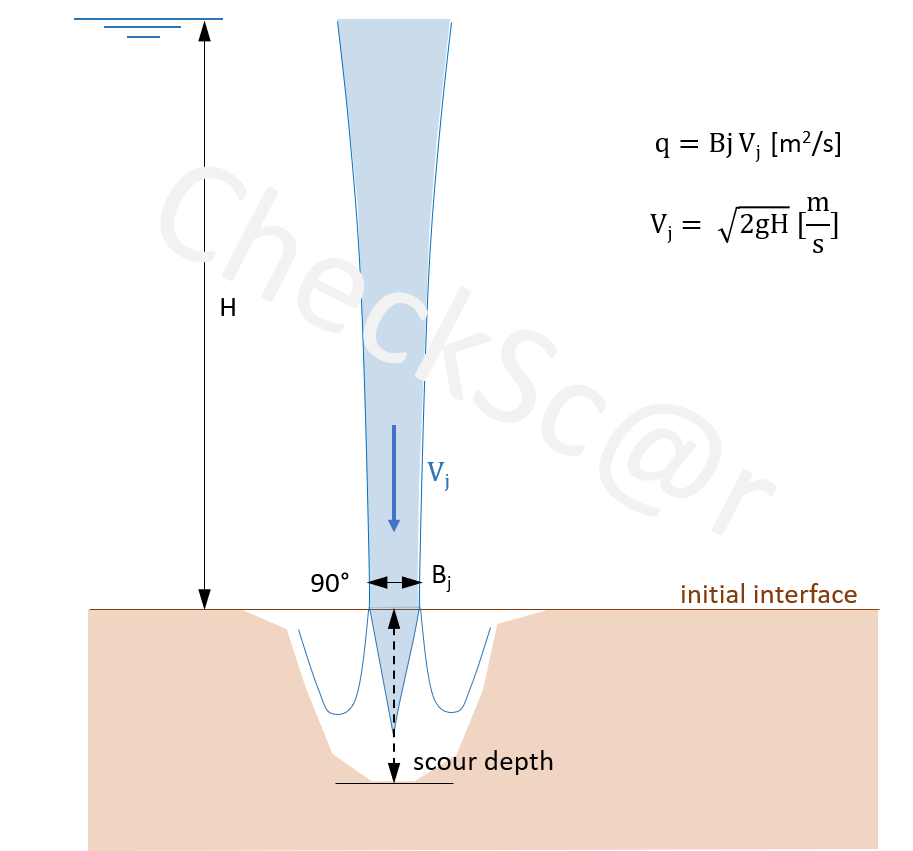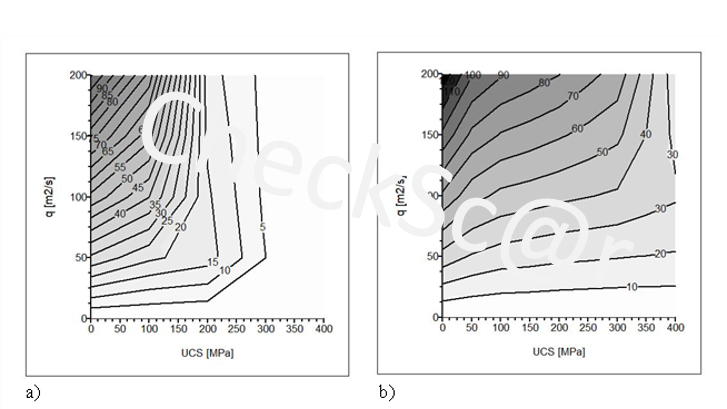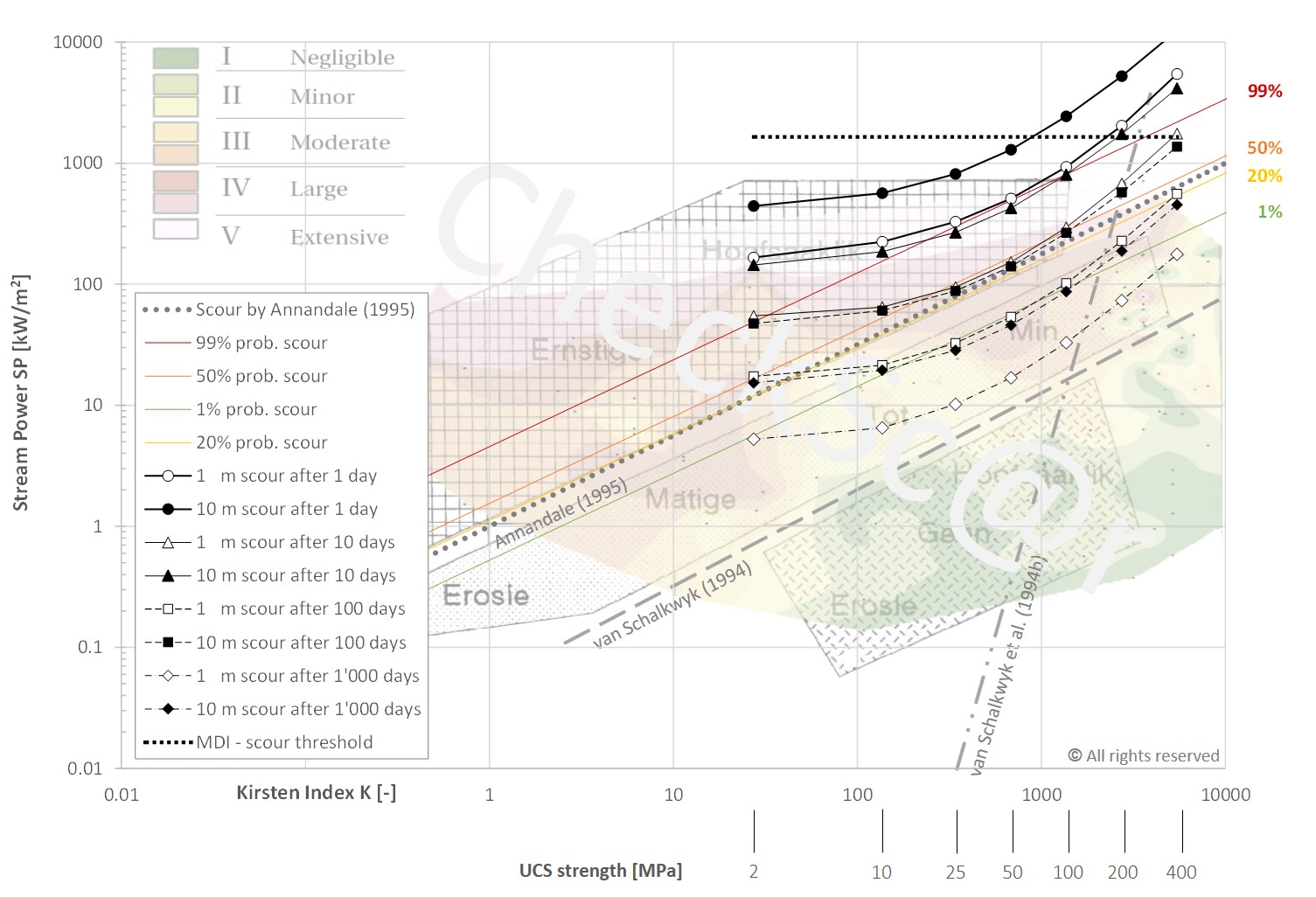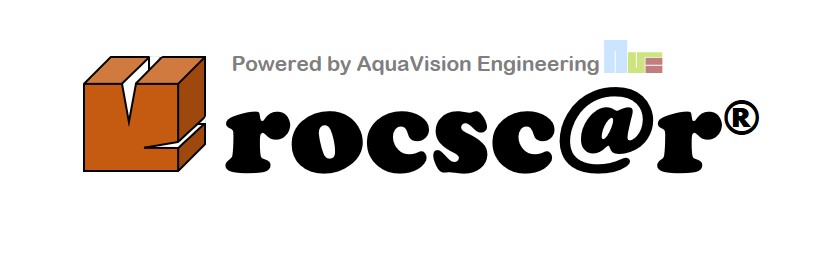CheckSc@r™ is a specific module of the cloud-based rocsc@r® software that allows you to make a first-hand estimate of the scour potential of a given dam site without making any computations. It is typically used to make a preliminary assessment of those dam sites that might be scour vulnerable and that might need further investigations.
The module is freely available to everyone by simply making a log-in on the cloud. It considers scour potential at the point of impact of vertically plunging jets, without tailwater level, and is based on a series of graphical solutions (abacus) for different net hydraulic heads and specific discharges, available for both compact and broken up jets upon impact.
Furthermore, the graphical solutions distinguish between different rock qualities (type, UCS strength) and degrees of fracturing, as well as differently sized rock blocks.
They make use of the Comprehensive Fracture Mechanics (CFM) method to estimate different degrees of scour formation after 1, 10, 100 and 1’000 days of discharge, and of the Modified Dynamic Impulsion method to estimate the ultimate scour depth based on rock block uplift.


Key features
- FREE on-line first-hand scour check for plunging jets
- Choice of hydraulic parameters (net head H, specific discharge q, jet break-up)
- Choice of geomechanic parameters (weak/strong rock, UCS strength, degree of fracturing, rock block height)
- Graphical solutions from 1D rocsc@r computations
- Different degrees of scour formation with time evolution (1-10-100-1000 days)
- Ultimate scour depth based on dynamic block uplift
- Influence of jet angle at impact on scour estimate
- Influence of tailwater level on scour estimate
CheckSc@r™ also allows to make a direct comparison between the preliminary scour estimate as provided by the graphical solutions, and different erodibility-index based methods, such as van Schalkwijk, Annandale, Wibowo and Pells.
Based on simplified assumptions on the joins and joint sets, the time evolution of scour formation as it is defined by the Comprehensive Fracture Mechanics method is superposed to these erodibility-index based thresholds and erosion categories.
These comparative solutions are available for different rock qualities (UCS strengths, degrees of fracturing, rock block heights) and for different types of jets (compact, broken up).

